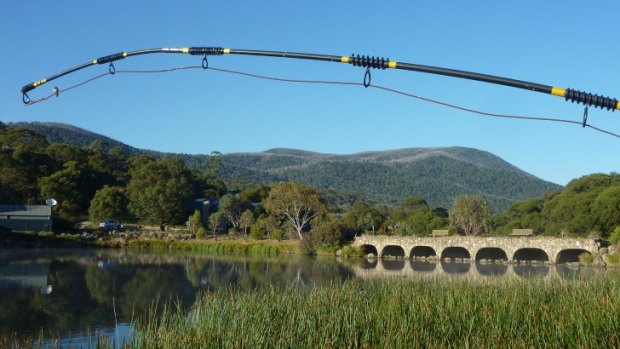
Lake Crackenback Resort’s ‘wombat burrow’ bridgeCredit: Tim the Yowie Man
‘Here’s another one,’’ exclaims Sarah, my four-year-old daughter, as she crouches down and peers expectantly into the burrow. With her head bobbing up and down in excitement resulting in her head torch resembling a hyperactive flyfire, she repeatedly calls, ‘‘C’mon wombat, c’mon, say hello.’’ We wait. No response. It’s the fourth burrow in the space of just 10 metres that Sarah has unsuccessfully employed the same comical tactics to lure out a wombat.
After much begging, I’ve finally taken Sarah on the spotlight walk around Lake Crackenback. Led by high-country naturalist Nick Waite, these one-hour, mini-adventures are designed to showcase the natural wonders of the Snowies after dark.
Nick attempts to show us possums scurrying up trees, red-neck wallabies grazing on the grass and even points out the Milky Way and other celestial objects. But it’s all to no avail. Sarah doesn’t lift her head. Not once. A UFO could be buzzing overhead and she wouldn’t know. She’s on a mission to find a wombat. And that’s that.
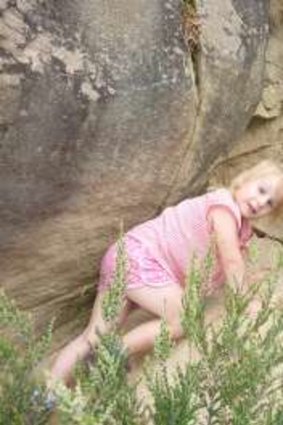
Sarah searches for an elusive wombat at Lake Crackenback ResortCredit: Tim the Yowie Man
Not surprisingly, not one single wombat is enticed to pop its head out and say hello. No doubt they are either cowering deep in their burrows (which can extend up to 25 metres in length) wondering what all the hullabaloo is about or they are off on their nightly foraging escapades. ‘‘Wombats have burrows for different purposes,’’ explains Nick, ‘‘they may have up to 12 burrows each.’’
Eventually, we spot a wombat nonchalantly wandering along the path. Yippee! Nick and I restrain Sarah from chasing it. Instead, she watches it, transfixed by its movements before it disappears under a bush.
Back in her bunk, Sarah slips off into sleep, no doubt dreaming of her first wombat encounter. It’s easy (and relatively normal) for young children to become temporarily obsessed with things. For this trip at least, it is wombats and next morning on the way to breakfast everything is about her newfound short-legged marsupial friends.
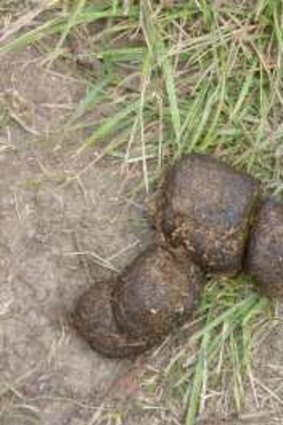
Cubed shape droppings of a wombatCredit: Tim the Yowie Man
‘‘They must be burrows for the giant ones,’’ she says, pointing to a line of pipes at the end of the lake. Heck, even at breakfast in the resort’s somewhat dignified dining room, Sarah embarrassingly starts to compare the shape and size of her potato bites to the droppings of the wombats. ‘‘Why do wombats do square poo?’’ she diligently asks. Not wanting her to dwell on the subject while at the buffet, I explain it’s because they have square bottoms.*
On the way back to our chalet, we stop off at the man-made lake’s sandy beach where a number of kayaks line the sand. Sarah grabs one of the oars and feverishly starts to dig with it. An elderly lady sitting on the sand soaking up the morning sun politely compliments Sarah on her sandcastle building efforts.
‘‘It’s not a sandcastle, I’m digging a wombat burrow,’’ she emphatically quips back.‘‘C’mon Daddy, please help!’’ she exclaims.
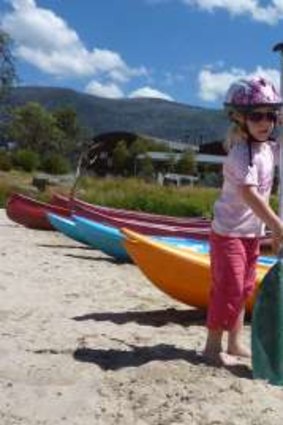
Sarah grabs an oar to aid her wombat burrow digging at Lake CrackenbackCredit: Tim the Yowie Man
‘‘They’re only a pre-schooler once. Enjoy it,’’ urges the elderly lady.
Almost on cue, Sarah flicks an oarfull of sand under her legs wombat-style in my direction.
I think about the lady’s remark. She’s right. And wiping sand from my eyes, I thank goodness for that.
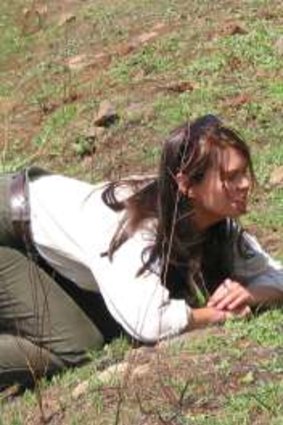
Ranger Meg comes face to face with a wombat shortly after the Canberra 2003 firesCredit: Courtesy of Meg Doepel
* If you have a theory as to why wombats produce square/cube shaped droppings, let me know.
Fact File
Lake Crackenback Spotlight Tours: Lake Crackenback Resort, 1650 Alpine Way, Crackenback (between Jindabyne and Thredbo). $15per person. Advance bookings essential and minimum numbers required. Accommodation packages also available. Ph: 1800 020 524 or www.lakecrackenback.com.au
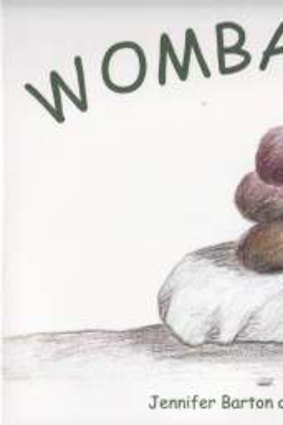
A delightful new children's book
Did You Know? A wombat’s pouch faces backwards – that’s so when the wombat digs, it doesn’t fill its pouch with dirt.
***
Wombat encounter
Like all animals that live in the bush, wombats are subject to all sorts of weather and climatic extremes, including flood and fire.Given many wombats love to make their burrows in sandy soil along the banks of creeks and rivers, a significant number would have been inundated in last week’s record big wet.
While I’m reliably informed common wombats (Vombatus ursinus), the species prevalent in our region, simply scramble to higher ground during floods, I wonder how many didn’t make it safely out of their burrows before they collapsed or were inundated with rapidly rising water.
A couple of months after the last major weather event in our region, the 2003 fires, a surviving wombat in a particularly fire-ravaged area was spotted by Meg Doepel, who was a ranger with the Murrumbidgee Corridor at the time.
‘‘I was driving along Brindabella Road when I noticed this little fellow grazing on new grass shoots appearing on the blackened landscape. I stopped the car and approached him to say hello. I got down on my knees and to my surprise he approached me also!’’ Luckily Meg’s friend was quick with a camera and captured her teˆte-a-teˆte with the solitary wombat.
‘‘We had a private chat for a while and just after this photo was taken he approached so closely that our noses nearly touched. I only wish we really spoke the same language and that I could have talked to him about his ordeal during the fires,’’ reflects Meg, who fondly recalls the chance encounter as ‘‘one of the most treasured moments’’ in her life as a ranger.
I wonder how Meg’s stubby-tailed friend coped in the big wet.
STOP PRESS (8 September 2012)
Regular readers will be only too aware of this column’s somewhat unhealthy obsession with wombat droppings. And it seems to be spreading. So much so that author, Jennifer Barton has just penned a children’s book about the distinctive cube-shaped droppings.
Aptly-titled Wombat Pooh, Barton’s book, set in the Wee Jasper valley and beautifully illustrated by Patricia Wilkinson, features a mound of the proverbial on just about every page.
Wombat Pooh is available at the Australian National Botanic Gardens Bookshop. A word of warning though: once you read the book’s recurring chorus: ‘‘Wombat wombat, where are you? All we see is lots of POOH!’’ you’ll be humming the tune (and words!) for days.
Sign up for the Traveller newsletter
The latest travel news, tips and inspiration delivered to your inbox. Sign up now.